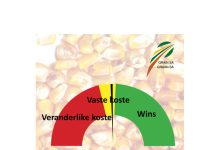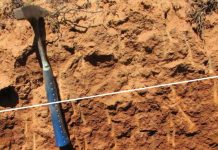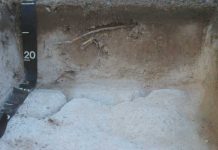Soil is the most fundamental resource for the farmer, without which food and natural fibre cannot be produced. This article forms part of a series to highlight this resource.
Salt and sodium enriched soils are colloquially and jointly known as brackish soil. As will become clear from the ensuing discussion, these are, however, two widely divergent concepts and the recovery thereof must be done completely differently.
Classification
Two parameters are used to characterise saline and sodium soil. The electrical conductance (EC) measures the saline content, which is expressed as milliSiemen per metre (mS m-1). The higher the salt content of the soil, the higher the EC will be. Saline soil is thus defined as that soil which has an EC higher than 400 mS m-1. This soil is also know colloquially as white saline soil, as the salt crystals crystallise as a white layer on the soil surface (Figure 1).
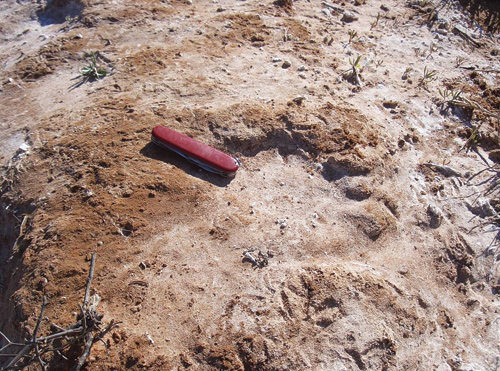
The sodium content of soil is expressed as the exchangeable sodium percentage (ESP) of the sodium adsorption ratio (SAR). Although these two parameters differ (like the two sides of a balance scale) they have more or less the same marginal value and are usually confused with one another. Soil with an ESP of greater than 15% is classified as sodium soil. This soil is colloquially known as black sodic as the high sodium content results in a high pH, which causes the organic material to dissolve and accumulate as a black layer (Figure 2).
Soil with an EC of greater than 400 mS m-1 and an ESP of greater than 15% is classified as saline sodium soil.
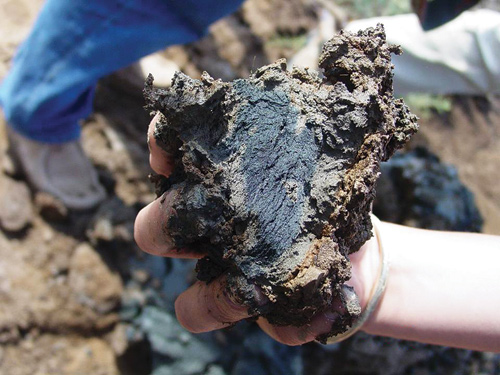
Properties
Salt lowers the osmotic potential of ground water (see Part 11 in the series). The more salt in the soil, the greater the difficulty the plant has of absorbing water from the soil. It is therefore possible that the soil will appear to be physically wet while the plant is wilting from drought, simply because there is too much salt in the soil water. This is the main negative reaction experienced in saline soil.
In contrast, sodium soil is characterised by sodium which thickens the diffuse double layer of clay particles (see Part 8 in the series). Clay particles that become thicker, can only fill the pore spaces with this greater volume. The porous spaces thus become smaller (or fewer) with increasing amounts of clay, especially expansive clay, and increasing amounts of sodium in the soil. As the pore spaces are fewer, the saturated hydraulic conductivity and the aeration of the soil decreases. Water and air can therefore not infiltrate the soil. Therefore it will also be difficult to leach in ameliorants such as gypsum.
Saline sodium soil has the negative effect of a low osmotic potential (as a result of a higher salt content), but the salt also counteracts the effect of the sodium (which wants to expand the diffuse double layer). This happens because a higher salt concentration in the soil solution results in a thin double layer (see Part 8). The nett effect of a high salt and high sodium content is therefore only a small increase in the thickness of the diffuse double layer. The saturated hydraulic conductivity is therefore adequate for water and air to move.
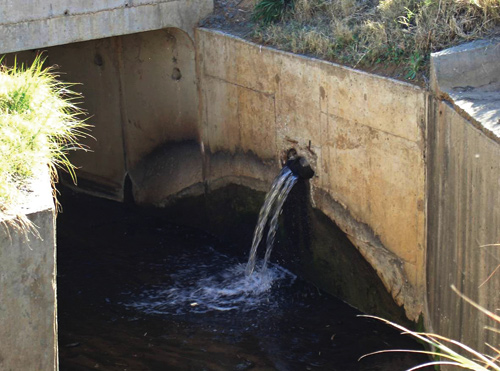
Recovery
Saline soil can be recovered reasonably easily by leaching it with clean (salt-free) water. The quantity of water needed to leach the soil to remove the salt, is calculated using the leaching fraction (EC of the irrigation water/EC of the drainage water).
Sodic soil is recovered by replacing the sodium on the exchange complex and in the soil solution with calcium. Gypsum (CaSO4) is normally used as a source of calcium because it is more soluble than lime. The gypsum must be leached into the soil and the NaSO4 that is formed, must be leached out of the soil.
It is therefore clear that the lowered hydraulic conductivity for both these processes will be problematic. It makes the recovery of sodic soil very laborious, long and expensive – almost to the level that it is not worth the effort. The amount of gypsum that must be applied, depends on the Na, Ca and Mg content as well as the cation exchange capacity of the soil. Soil analyses and expert advice is therefore needed.
Saline sodic soil is easier to recover because the saturated hydraulic conductivity is kept reasonably constant by the salt. However, the sodium must be removed first by the application of gypsum and leached out of the soil. Thereafter the salt may be leached out of the soil using clean water. If the recovery were to be done the other way round, the saline sodic soil will be turned into a sodic soil which, in turn, is very difficult to recover. As with sodic soil, soil analyses and expert advice is of cardinal importance.
In all the above cases, drainage of the soil is essential. Should the salt and sodium not be leached (drained) out of the soil, they will remain behind in the soil and the effect thereof will not be reduced. This is the main reason why shallow, poorly drained soil is not recommended for irrigation and why artificial underground drainage must be installed at great cost in some irrigated lands.
Origin
Although soil under natural conditions contains salts, irrigating with water containing salt is the main cause of saline soil. All water contains salt and only pure water is transpired. Salt will therefore accumulate in the soil unless it is leached out of the soil. Saline soil is common in irrigation schemes in South Africa and is more common with poorer water quality (more salts) and the poorer the drainage of the soil is.
The main source of sodium in soil is from the parent material, especially the Beaufort and Ecca shale rock formations. The irrigation of this soil is normally not recommended. For that reason the occurrence of sodic soil under irrigation is scarce.
Summary
Saline and sodic soils have widely divergent properties and must therefore be treated in different ways in order to recover it. The only way to distinguish between these three soil types, is by making use of soil analyses. Expert advice is also necessary to calculate the amounts of ameliorants. Should saline and/or sodium soil be incorrectly identified and recovered, a bad situation could be turned into an extremely bad situation.
For further information, please contact the authors on: Martiens du Plessis: martiens@nwk.co.za or Prof Cornie van Huyssteen: vanhuyssteencw@ufs.ac.za.
REFERENCES
Brady, NC. 1990. The nature and properties of soils. 10th ed. Macmillan publishing company, New York.




